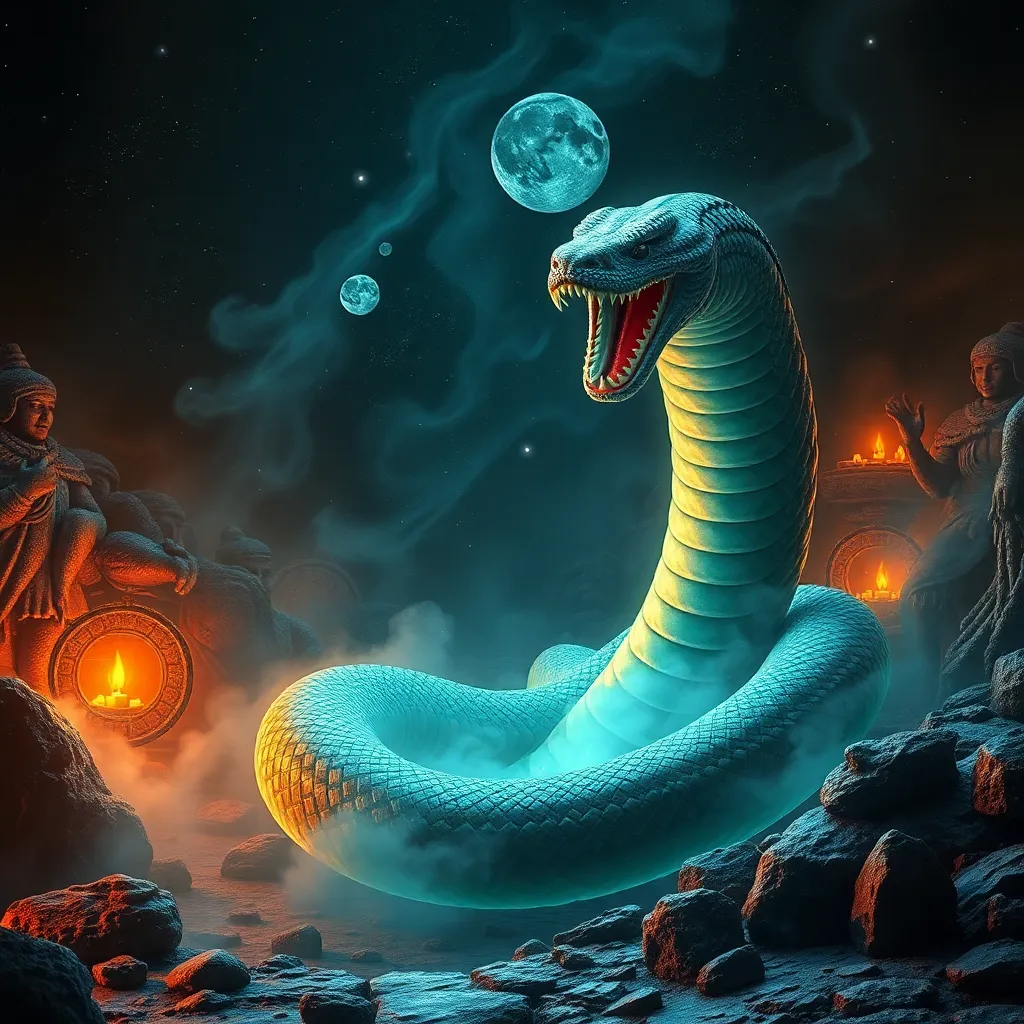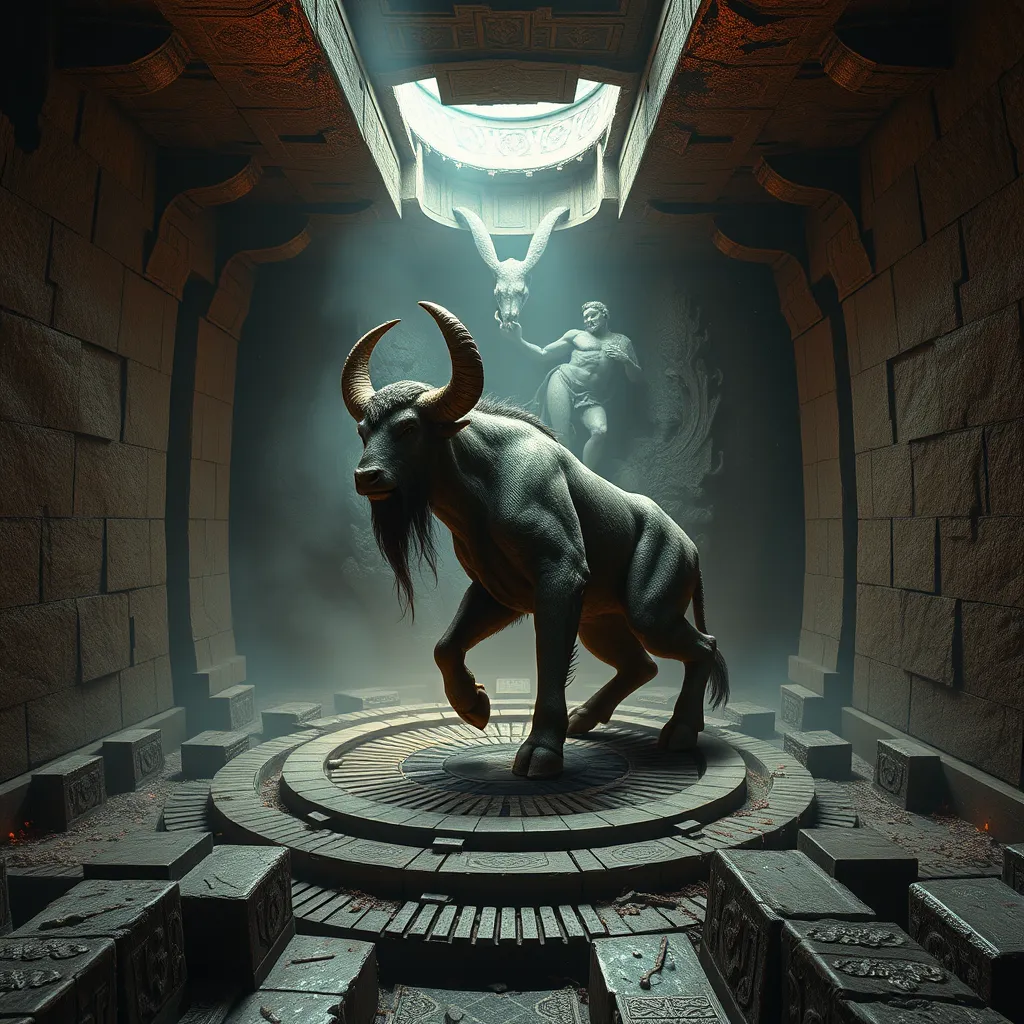Cipactli and the Cosmic Cycle: Exploring the Serpent’s Role in the Eternal Return
I. Introduction
Cipactli, a prominent figure in Mesoamerican mythology, embodies the complex interplay between creation and destruction. Recognized as a monstrous earth goddess, Cipactli plays a vital role in the genesis of the world as depicted in Aztec narratives. This article delves into the construct of the cosmic cycle, a central theme in Mesoamerican culture, exploring how Cipactli symbolizes the eternal return of existence.
II. The Myth of Cipactli
In Aztec mythology, Cipactli is portrayed as a crocodile or serpent-like creature, often depicted with features that evoke both fear and reverence. According to the legends, Cipactli was the primordial being that existed before the creation of the world.
A. Description of Cipactli in Aztec Mythology
Cipactli is described as a massive creature who possessed an insatiable appetite. Her hunger was so great that it threatened the stability of the cosmos. To create the world, the gods, in particular Tezcatlipoca and Quetzalcoatl, had to confront her.
B. Origin Stories of Cipactli and the Creation of the World
One of the most profound stories regarding Cipactli involves her being split in two by the gods, with her body becoming the earth and her blood the seas. This act not only created land and water but also marked the beginning of time as a cyclic process.
C. Symbolism Associated with Cipactli as a Primordial Being
Cipactli symbolizes the chaos that precedes order. As a primordial figure, she represents the raw potential of creation and the inevitable destruction that follows. Her existence highlights the necessity of balance in the cosmos.
III. The Concept of the Eternal Return
The concept of eternal return, or the cyclical repetition of events, is a common theme in various philosophical and cultural contexts. In Mesoamerican cosmology, time is viewed not as linear but as a series of cycles that repeat themselves.
A. Definition of the Eternal Return in Philosophical and Cultural Contexts
The eternal return posits that all events in the universe will repeat themselves infinitely in the same sequence. This concept raises questions about time, existence, and the nature of reality.
B. The Cyclical Nature of Time in Mesoamerican Cosmology
In Mesoamerican beliefs, time is divided into epochs or suns, each characterized by its own creation and destruction. This cyclical understanding of time resonates deeply with the myth of Cipactli.
C. Similarities Between Cipactli’s Narrative and the Concept of Eternal Return
Cipactli’s narrative encapsulates the eternal return through her duality of creation and destruction. Just as the cosmos undergoes cycles of renewal, so too does Cipactli’s story reflect the endless dance of life and death.
IV. Cipactli as a Symbol of Creation and Destruction
Cipactli embodies the dual nature of existence—creation and destruction. Her myth illustrates how these forces are interwoven in the fabric of the universe.
A. Cipactli’s Dual Role in Creation Myths
As a destroyer, Cipactli’s insatiable hunger leads to chaos; however, this chaos is also the precursor to creation. Her sacrifice allowed for the birth of the world, demonstrating the necessity of destruction in the creative process.
B. The Significance of Destruction in the Process of Renewal
Destruction is not merely an end but a transformation. It paves the way for new beginnings, making it an essential aspect of the cosmic cycle. Cipactli’s actions exemplify this vital relationship between creation and destruction.
C. Interpretation of Cipactli’s Actions in the Context of Cosmic Cycles
By understanding Cipactli’s role, one can appreciate how her actions reflect the Mesoamerican belief in cyclical time, where every ending is also a new beginning. This interpretation allows for a deeper understanding of the natural world and its rhythms.
V. The Serpent Archetype in Mesoamerican Mythology
The serpent is a powerful symbol in many cultures, representing various concepts such as life, death, and rebirth. In Mesoamerican mythology, serpents often embody significant natural forces.
A. Exploration of Serpentine Symbolism Across Various Cultures
- In Ancient Egypt, serpents were associated with protection and royalty.
- In Hinduism, the serpent Naga represents both the earth and the underworld.
- In Christianity, the serpent represents temptation and sin.
B. Cipactli’s Connection to Other Serpent Deities in Mesoamerican Lore
Cipactli’s serpentine form connects her to other Mesoamerican deities, such as Quetzalcoatl, the feathered serpent, who is associated with wisdom and wind. This connection emphasizes the integral role of serpents in Mesoamerican creation myths.
C. The Significance of Serpents in Representing Life, Death, and Rebirth
Serpents often symbolize the cycle of life and death, shedding their skins as a metaphor for renewal. This symbolism aligns with the narrative of Cipactli, who embodies this transformative aspect of existence.
VI. The Influence of Cipactli on Modern Interpretations of the Cosmic Cycle
Today, the myth of Cipactli continues to resonate in literature, art, and ecological discussions, highlighting her enduring significance in contemporary society.
A. Contemporary Readings of Cipactli’s Myth in Literature and Art
Modern interpretations of Cipactli often explore themes of environmentalism and the cyclical nature of life. Artists and writers utilize her story to address contemporary issues related to nature and existence.
B. The Relevance of Cipactli in Modern Discussions About Nature and Ecology
Cipactli’s myth serves as a reminder of humanity’s connection to nature and the importance of ecological balance. Her story encourages a deeper appreciation of the cycles of life and the impact of human actions on the environment.
C. Cipactli as a Symbol of Resilience and Transformation
In modern contexts, Cipactli embodies resilience—the ability to overcome chaos and emerge renewed. This message is particularly relevant in times of crisis, where transformation often follows destruction.
VII. Conclusion
In conclusion, Cipactli’s significance in the cosmic cycle is profound. Her dual role as a creator and destroyer encapsulates the principles of the eternal return, reflecting the cyclical nature of existence in Mesoamerican cosmology.
Understanding mythological figures like Cipactli enriches our comprehension of cultural narratives and their relevance to contemporary issues. As we navigate the challenges of today, the lessons embedded in Cipactli’s myth remind us of the interconnectedness of life, death, and rebirth.
VIII. Further Reading and Resources
- Recommended Books:
- “The Mythology of Mexico and Central America” by John Bierhorst
- “Aztec Thought and Culture” by Miguel León-Portilla
- “Mesoamerican Mythology” by David Carrasco
- Online Resources:
- Academic Journals:
- Journal of Mesoamerican Studies
- Latin American Antiquity




